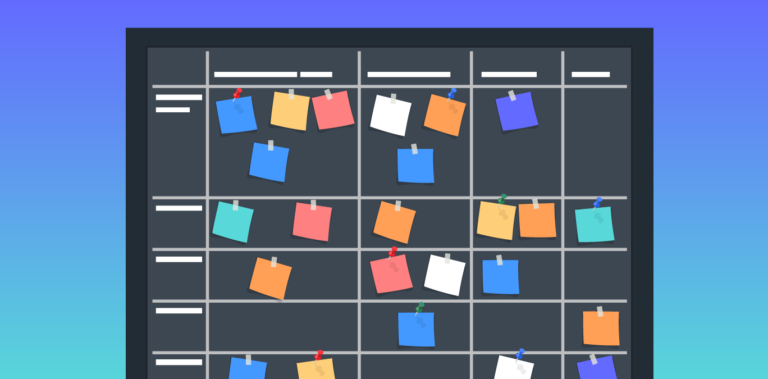A product backlog is an ordered list of User Stories, bugs, and tasks for an Agile team to work against. Product backlogs show what is needed at the task-level to be successful with the strategic plan. These items in the backlog provide a description of a needed outcome for a team to have completed each task. This backlog is regularly groomed and prioritized to regular team planning intervals, such as bi-weekly sprint planning when practicing Scrum.
Why Product Backlogs Are Essential
They set expectations
This prioritized list of items to work on can help set the bounds of what to expect. It aids product managers in breaking down strategic objectives and showing how they link to smaller, task-level items. The work of a cross-functional team can run more smoothly with a backlog. Little or no time will be wasted on trying to figure out what to do next, and it is easy to see what needs to be worked on and how important they are.
Product backlogs foster team discussion
These lists promote discussions in cross-functional teams on what’s important. They help you to prioritize work and harmonize the priorities of everyone on the team.
Usually, items closer to the bottom are yet to receive sufficient attention. These leave room for further discussion by team members. With a product management software, you can create a product roadmap while prioritizing the opportunities and share it with your team.
They are helpful for iteration planning
A product backlog provides the basis for iteration planning. It ideally contains all work items, which are deliberated upon during general discussion preceding every iteration.
Whatever concessions that need to be made are taken care of together by the product owner and the team. This enables an iteration to get off to a good start.
They make work allocation easier
Product backlogs can also make it easier to allot work to everyone. With their aid, product managers are better able to ensure that items or tasks are being assigned to the right persons considering their overall importance.
Product Backlog in Practice
In their work, product managers pay great attention to the strategic, high-level objectives of an organization. These drive the solutions that they work to deliver to users. They are what give rise to the different tasks that go on a product backlog.
This means that the process of putting together the backlog should begin with the product roadmap and requirements. The roadmap is the document that provides a high-level, strategic overview of the product vision and direction. As for requirements, they are the features, functions, and behaviors required of a product.
Scrum teams split roadmap initiatives into epics, each of which has some requirements and user stories. Among the items on an average Scrum backlog are:
- User stories
- Bugs
- Features
- Customer requests
- Technical work
The product owner along with the Scrum team brainstorms what items should be on the backlog. These items are collaboratively prioritized.
The product owner presents the ordered backlog at a sprint planning meeting in an Agile setting. Sprints are short time blocks for executing defined development work – lasting no more than a month in most cases.
Along with the entire team, the product owner decides on the work to do in the next sprint. They select items from the product backlog to move to the sprint backlog.
Item selections usually begin from the top. The Scrum team selects the most important tasks first to give their attention and then starts moving down the list. They could, for instance, select the top three items to focus on during a sprint.
Scrum teams may draw a line to separate high-priority items they deem feasible from low-priority ones. When this happens, it is not impossible to see some pick a number of high-priority items and add some related lower-priority items for a sprint.
The Product Backlog is Never Done
The product backlog is not static, it evolves. Therefore, you should not view it as something that you set and forget.
You don’t need to know all items or requirements before starting a project in Scrum. While that may seem very vital for success, change is one thing that Agile practitioners know as being constant. You may find that some things are no longer relevant down the line when you start with a long list of items or tasks.
You should allow your product backlog to change and take a form more attuned to new learning. This is where a backlog grooming session comes in to prevent the list from becoming unmanageable.
Backlog grooming or refinement involves reviewing the product backlog to keep it in a good state. It offers room for relevant parties to discuss items as well as add to, remove from, and re-prioritize them.










